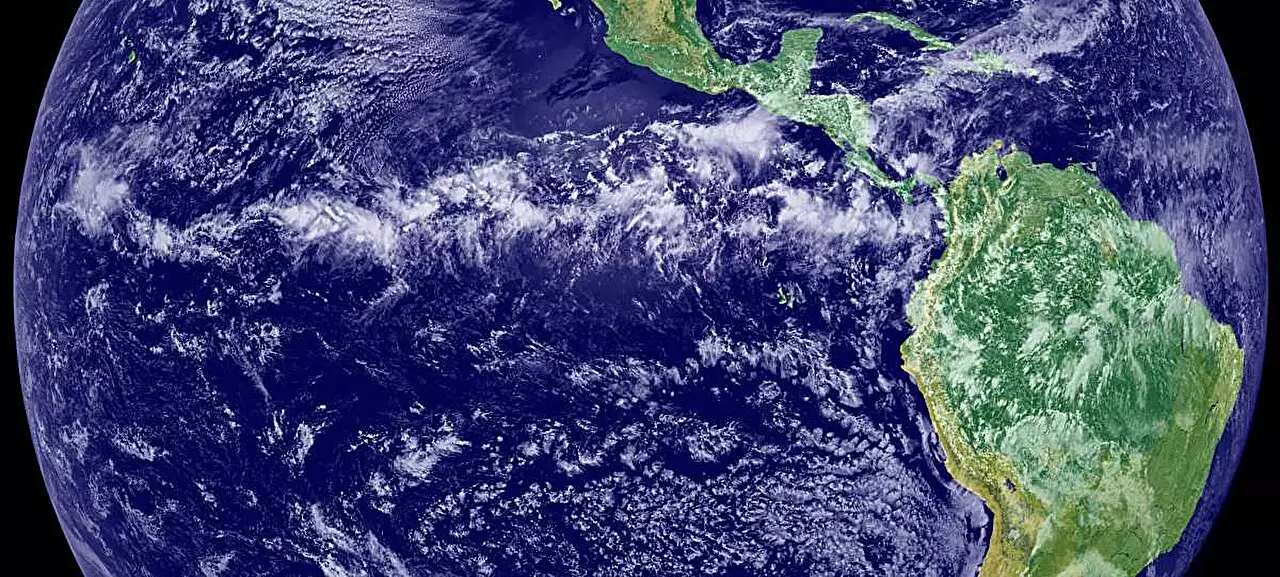As the summer of 2024 marked its place in history as the hottest season on record, the implications of this trend have become alarmingly evident. The intensification of heat waves and droughts, particularly in the Northern Hemisphere, has raised concerns about escalating wildfires, crop failures, and serious health risks for populations across North America and Europe. This past summer could have served as a wake-up call, yet the trajectory towards extreme climate conditions had been established long before, foreshadowing the challenges that lay ahead.
The underlying problem is the deterioration of the Earth’s air circulation systems, which historically functioned to distribute moisture and heat across the planet. Over time, these systems have shown a marked weakness, directly correlating with human activities and emissions. Unfortunately, the precise mechanisms driving this decline had remained largely elusive until now, with new studies offering vital insights into the human role in altering these crucial atmospheric dynamics.
In a groundbreaking effort led by Dr. Rei Chemke from the Weizmann Institute of Science, recent research has elucidated how human-induced factors are compromising the integrity of air circulation systems. His studies reveal that both wind patterns and the Hadley circulation—a crucial component of the global climate system—have been weakening significantly, and the primary culprit is human activity, especially the emission of greenhouse gases.
Wind patterns, often described as storm tracks, play a pivotal role in the transfer of heat, moisture, and air momentum throughout the atmosphere. These patterns, which traditionally functioned as a robust network bringing vital cool air from oceanic regions onto land, are becoming increasingly compromised. The research indicates that as air warms disproportionately at higher latitudes due to greenhouse gas emissions, the temperature gradient between the poles and the equator diminishes. This decrease in temperature disparity is directly linked to a deterioration in storm track intensity, culminating in more extreme heat events on continents.
While the weakening of wind patterns is a critical concern, the study of the Hadley circulation reveals an even greater historical transformation. Historically, natural elements such as volcanic activity and solar connection played a vital role in strengthening this flow. However, the findings show a stark contrast to past climatic behaviors where natural factors worked to support this circulation. In contemporary times, the influence of human-induced emissions has overshadowed these natural cycles.
In a comprehensive study conducted alongside Prof. Dim Coumou from the Institute for Environmental Studies in Amsterdam, Chemke established a link between reduced Hadley circulation and anthropogenic factors. Historically, cooling climate conditions reinforced the Hadley circulation. Yet, the ongoing scenario of climate warming has reversed this effect, marking a new chapter in atmospheric response where man’s actions override natural climatic processes.
The call for deeper integration of natural factors into climate models has become more pertinent than ever. Climate scientists often privilege human impact in their analyses, overlooking how natural phenomena have historically influenced climate systems. However, the current research underscores that natural components still hold significant sway over climatic conditions, although their impact is eclipsed by the scale of human emissions. This raises the question: have scientists inadvertently ignored vital influences in the climate narrative?
As Dr. Chemke and his colleagues aptly noted, while addressing manmade emissions is crucial, understanding the role of natural events—be it volcanic eruptions or variations in solar activity—can lend critical context to climate modeling. By neglecting these factors, models may present an incomplete picture, potentially skewing our understanding of the long-term trends in climate dynamics.
As we move forward in a world increasingly characterized by extreme weather patterns and climate shifts, it is essential that both scholars and policymakers adopt a multifaceted approach to understanding climatic phenomena. The urgency of the situation demands an honest reflection on how humanity’s actions reverberate through natural systems, and how we might mitigate these effects through informed policies and practices.
By embracing a comprehensive understanding of both anthropogenic and natural factors influencing climate, we can foster more robust responses to the impending challenges posed by climate change. The complex interplay of forces shaping our world today is not just a scientific question; it is a societal imperative demanding immediate and sustained attention. Our future, quite literally, depends on it.


Leave a Reply